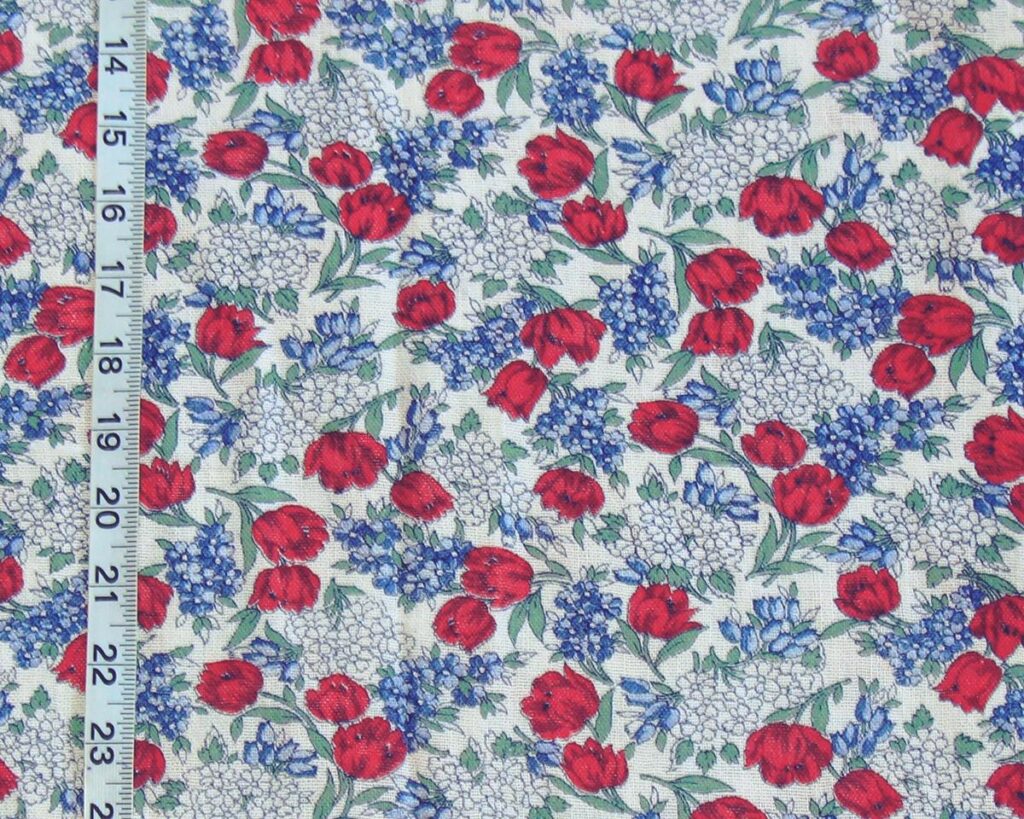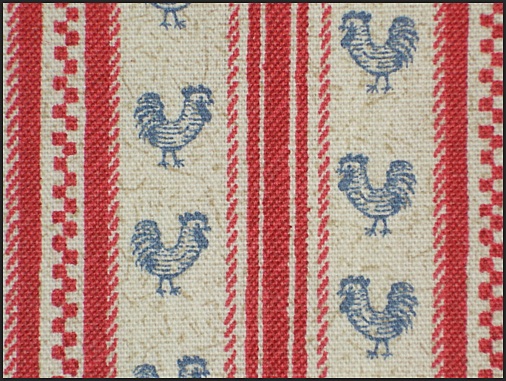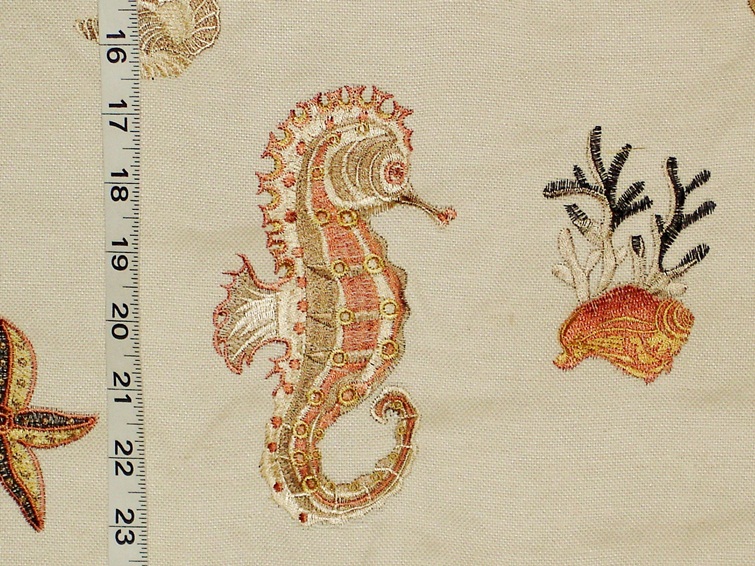I was recently going through images of fabrics we have had. And as I looked at some of the older ones, it reminded me of how this business came to be, how it all happened. So, I thought I would explain how Brick House Fabrics came to be.

So, how did this start? This fabric company, Brick House Fabrics? … it was a fluke. A fluke of circumstances, and time.
Years ago I was introduced to the net. I really did not see the point of the World Wide Web, and had no interest in it. I did not have a computer, and saw no need of it. I had my phone with a 25 foot cord, and eventually had a telephone with a built in fax. What else did one need?
But, people around me were interested in the internet. People in my family got computers, children in school got them, dial up internet connection happened, and I was suddenly surrounded by new technology, of which I still had no interest. I still had the phone, I wrote letters, and got everything by mail… what more did one need?
Let’s face it- I am a stick in the mud.
My first entry into the world of the computer and the net was via Ebay. Somehow on Ebay I came across feedsacks. I was probably looking up vintage fabrics. And, they intrigued me. I loved why they were created, and what woman used them for, and the patterns were, and are, amazing! And, thus it began.
In college I had made quilts. They were based, on old American patterns, at first. I made two for my parents house in Eastern Oregon. At that time I started really looking at quilts- the Colonial quilts, Baltimore quilts, New Jersey Quilts, and Amish quilts, and others. I visited museums to see them first hand.
And, I really dug into the history of quilting- in particular the English, French, and American quilt histories.
And, I started researching patterns and the fabrics used. While I had always liked fabric, and bought it, my fascination with the patterns and history of feedsacks was where I really started absorbing knowledge of pattern and design.
I bought a red tulip sack on Ebay. And, then another, of a different pattern. I wanted to put together a tulip quilt. But, they didn’t work together, the colors did not match, and the scale was all wrong. At this point I really did not know about dye lots or weaves. The feedsacks were a jumping off point for learning. By looking at the sacks, and feeling them, I learned, about dyes, dye lots, weaves, and patterns. I was hooked.
Because of the web, and this new tool called a computer I could research things. And I did. By researching dyes I learned about where they came from, how they originated, the changes to dyes because of wars, and their different uses. I also learned about the different printing techniques. By researching weaves I learned not only about different woven patterns , but I also learned about the looms, and what they were capable of as they changed over time.
And the net made it so easy to get information! And, not only could one learn about fabrics, the net made fabric easily available, without traveling! And that is how I started.
Every day, I would look on Ebay at the newly listed feed sacks to see if there were some to go with ones I had for different projects.
Suddenly I had sacks, and sacks, and sacks.
Now, cotton feedsacks are their own genre. Sacks of different weights had been used for seed, feed, and different foods for a long time. And, that fabric was reused for things like house hold textiles as well as clothing. The fabric manufacturers that produced the sacks realized that this was something to capitalize on, and started to print the fabric that was used for sacks with patterns. There were patterns with a border that could be used for aprons or pillow cases. There were florals, toiles, and just about anything one could imagine.
This started around 1925. Hundreds of patterns were printed on a variety of different cloths. There were coarse sacks for heavy items, and sacks for feed, flour, and sugar, and others as well. And, there was a variety of different weaves. Though the printing was a way to charge more for a sack, and the material would be reused, the primary purpose was still to hold dry goods. The sacks were work day items, that, when they arrived at a home, landed first on a barn floor. After they were emptied, they were washed and then put to other uses.
Sacks were made up through the 1960’s. For nearly forty years cotton was printed, used for holding products, and then reused for house hold items or clothing! It is a fascinating fabric story!
So, I had sacks that would not work for any project; I needed to destash! With great trepidation I started listing the ones I did not want back on Ebay. And they sold. I also had a large stash of fabric. And things I no longer wanted also got sold. And, so my life as a fabric seller began.
I opened an Ebay store, and sold. Then I started to buy remnants locally, and those sold. My husband was an antique dealer, and traveled, and I often went with him. While on the road we would go to fabric stores, buy remnants, and take them home. I photographed them, measured them, and listed them, using the kitchen counter as my office and photography studio, and the kitchen table as a shipping station.
I did not have a picture editor, and so getting colors correct was hard. So, I wrote pattern descriptions, and described color as best I could. I felt, and still feel, it is my job to explain what the fabric is about, to describe it as accurately as possible. I still try to do that.
About four or five years into this several things happened. I opened an account with my first fabric company. And, then Ebay algorithym changed. My sales had been increasing every year. But, suddenly sales slowed.
It was time to get a website. This was a scary thing!
At this point I did not even have a business name! Then, one morning, I was drinking my coffee, racking my brain, and as I looked out the kitchen window, at the run of the brick wall, my brain clicked: Brick House Fabrics. And, so it has remained.
So, the website was built. But, how to utilize it? I had no idea. But, I had to do something. And, so, I listed my first items. This is over twenty years ago. I was one of the first people to have a website with home decorating fabric. I had found my way. And bit by bit I learned more.
I learned more about fabric, about the fabric business, and about life on the net. Ecommerce was still in its infancy. How it has changed!
Years before all of this I had a business, Marine Knitters. It was a yarn store in the barn of our house. It was handspun and hand dyed yarns, from around the world. This is long before the internet. But, I would read knitting magazines, see ads for yarn, and write people in other countries about carrying their yarns. We had yarns from many places in both the US and Europe. We had everything from highland wool to qiviut to silks. It was a small store, packed with different fibers, with different spins.
This knowledge fed into the fabric business. The yarn business, and interacting with spinners, gave me a lot of knowledge about fibers, spins, and dyes. And all of the fabric remnants I had bought and sold had taught me a lot about fibers used for fabrics, designs, as well as fabric companies. When I didn’t know something I called a company, and asked. I talked to reps, to marketers, to designers. And, I learned. I learned about different printing methods- hand printing with screens vs rotary printing. The weaves, the different fibers, the different dyes. I researched, and dug stuff out, using people and the net to gather information. And I read. I researched the history of various designs, such as toiles and Indiennes. I also researched different fabric types- madras, calicos, chintzes, as well as damasks, lace, etc. I tried to learn as much as I could about the fabric industry, its past as well as how it worked today.
And, every year I added another company to buy from. From the very beginning I had concentrated on novelties. Years ago, I got a brocade fabric, a remnant, from Schumacher.
It had small King Charles spaniels woven into it. It sold. I bought more of it, and it sold. I could not believe it. And the same thing happened with a hedgehog fabric. And, a horse pattern. And, a chicken rooster pattern stunned me. It was shipped literally around the world.

I began to realize that people wanted patterns that were about their interests, and loves. So, I always looked for fabrics that might do that. A stripe is just a stripe. But a fabric with a defining pattern becomes persona.
I would actively research and track down horse fabrics, shell fabrics, and chicken fabrics. It took me two years to find the manufacturerer of the embroidered seahorse.

Every novelty was of interest. But, most companies only added one or two novelties a year, as they are oriented to the furniture industries’s needs. If I saw a pattern somewhere I persued it on the net, and I would pick up the phone and call companies to get information on a pattern
While we broadened our listings about ten years ago, for the most part we still concentrate on things that are different. We are known for novelties, that is our hallmark. And, that is where our interest lies.
So, the business grew. I was still cutting off on the kitchen table. And, there were bolts of fabric piled everywhere. It was out of hand.
So, we finished off an area of the barn, set up some racks, had a nice large table built, and moved the fabric into it. What a relief. At this point I needed help, so, I took the next step and hired a lady to cut and pack. This was a whole new ball game. But, it meant I could concentrate on getting pictures online with descriptions. At this point remnants were no longer part of the inventory, the fabric was all from fabric companies. And, in a way it was a shame, as remnants provided what I called fluff, to the website. But, now our own remnants do that.
Another twist of fate happened ten years ago, when my husband left, leaving me in the brick house. Taber had joined me at this point, and we made the decision to open the doors to retail. So, we rearranged things, made the front part of the house the showroom, as well as for packing and shipping, and the area in the barn for storage. Suddenly, I was living in a warehouse.
In many ways it was easy- I didn’t commute, which gave me a lot of time after hours for doing other things. But, the brick house was really big, and the goal became to sell it. So, we started looking for a space that would work. We looked from Damariscotta down to Brunswick. In each town there were only two spaces up for sale that were commercial spaces. But, in the end, only one of them was really suitable as we wanted to continue with retail walk in
It was the old Methodist church in Brunswick. It was downtown, and the second floor had nothing in it. It was totally open, which was what we needed. So, in 2017 we bought it, and renovated it. It needed everything. And, like all projects in a town, everything needed to go through design reviews, and meet codes, but we did get it done.
And, that is where we are today. We were open to retail until Covid, when we closed the doors. And, at this point Taber and I have decided to stay with online sales only, though we are open for phone support weekdays.
The world has changed from when I started selling feedsacks years ago, our lives have changed, and fabrics have changed. As I write this, I look back at the thousands and thousands of patterns that have passed through my hands, been photographed, listed, cut, and shipped.
And, I think about the people around the world that I have shipped to, connected with, and become online friends with.
It has been a truely amazing journey.
All the best, Barbara and Taber
Brick House Fabrics
